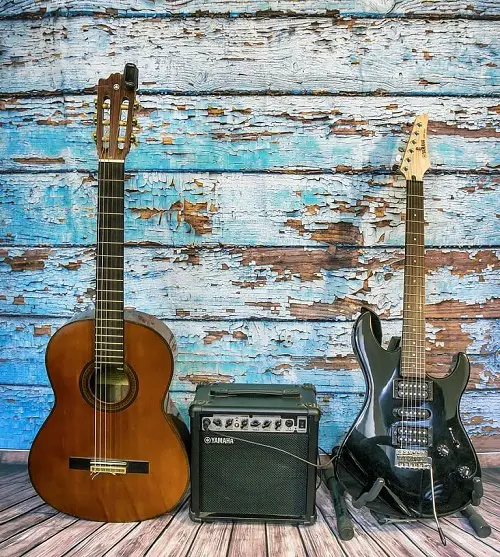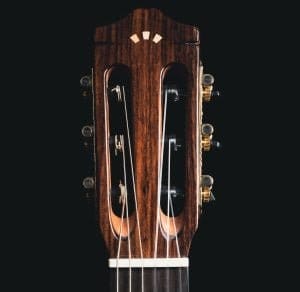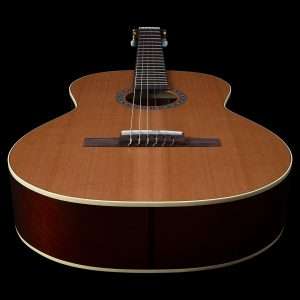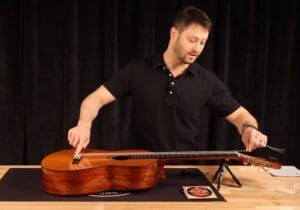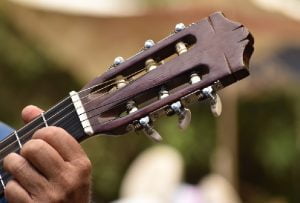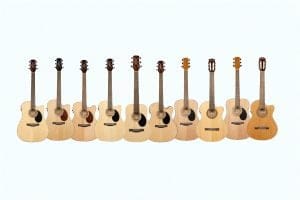Table of Contents
There are many guitar playing styles, and the instrument is one of the most versatile. The six-string marvel has transcended genres and generations to become an iconic symbol of musical expression.
The instrument’s versatility knows no bounds, from classical compositions’ intricate acoustic fingerstyle patterns to the searing electric guitar solos of rock ‘n’ roll. We’ll delve into fingerstyle virtuosity, the electrifying world of lead guitar, the rhythmic groove of strumming, and more!
Guitar Playing Styles by Technique
Rhythm guitar
The rhythm guitar creates the canvas to be painted on with melodies. Rhythm guitar parts involve strumming open, bar, and power chords in many rhythmic patterns, whichever suits the song’s meter. Strumming is typically done using picks, but many prefer fingernails. Rhythm guitar can be played on both an acoustic and an electric.
Genres you’ll find it in
Pop, rock, country, blues, jazz, and even heavy metal songs.
Flatpicking
Flatpicking is a guitar technique in which a flatpick strikes individual notes, creating a crisp, clear sound. It emphasizes precision, speed, and rhythmic patterns. Flatpickers employ cross-picking and alternate picking to craft intricate melodies and lively solos on acoustic guitars.
Genres you’ll find it in
Bluegrass and folk music.
Fingerstyle Accompaniment
The essence of fingerstyle accompaniment is arpeggiating through chords using the thumb for the bass strings (6th, 5th, and 4th) and the index, middle, and annular for the 3rd, 2nd, and 1st strings, respectively.
This technique enables guitarists to play combinations of multiple strings that aren’t possible with a pick. Fingerpicking is also more efficient than arpeggiating with a pick, so higher speed can be achieved.
Genres you’ll find it in
Pop, classical, folk, progressive rock, etc.
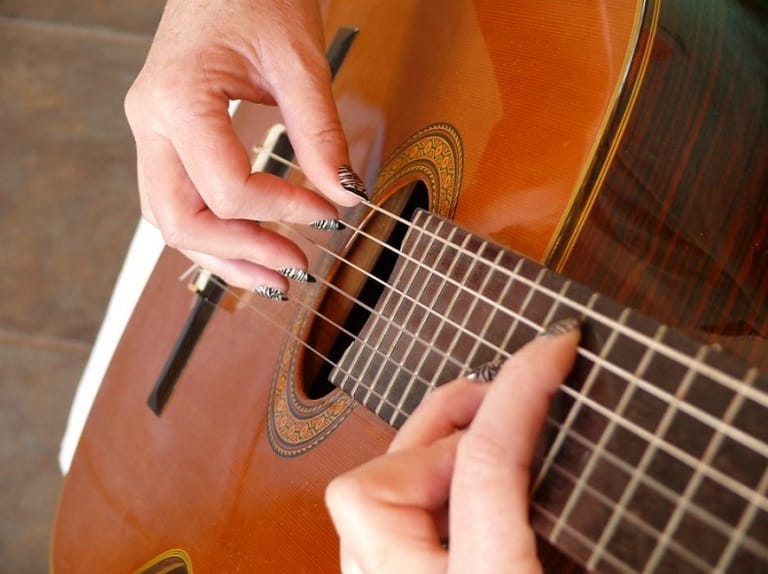
Solo Fingerstyle
In this style, the right-hand fingers are assigned for strings the same way as Fingerstyle accompaniment, but a solo fingerstyle also incorporates melodies while playing alongside the arpeggios.
The style is quite complex, and players in this style tend to be one-man armies – backing harmony and lead melody all in one guitar.
Genres you’ll find it in
Classical music, big time. Also, flamenco music.
Riff Guitar
Riff guitar is about power chords, dyads, blazing motifs, and palm muting. It is typically played on the bottom three strings, incorporating jarring rhythms and sleek grooves with fast chord switches, memorable progressions, and connection melodies. Heavy distortion effects are often applied, but clean tones are used for riffing in specific genres. Riffs are pretty much the soul of the heavier side of music.
Genres you’ll find it in
Most subgenres of rock and metal.
Lead Guitar
Lead guitarists perform everything from soulful, emotional melodies to awe-inspiring, blazing-fast solos. They build on the harmonies set by the rhythm or riff guitarist and paint the soundscape in their color. Scale runs, arpeggios, harmonics, bends, slides, tapping, muting—the list of techniques goes on and on.
Lead guitarists employ these various techniques and many effects, such as distortion, reverb, delay, etc., to develop their distinctive musical styles and craft song melodies.
Genres you’ll find it in
Blues, jazz, fusion, pop, and dozens of rock and metal subgenres.
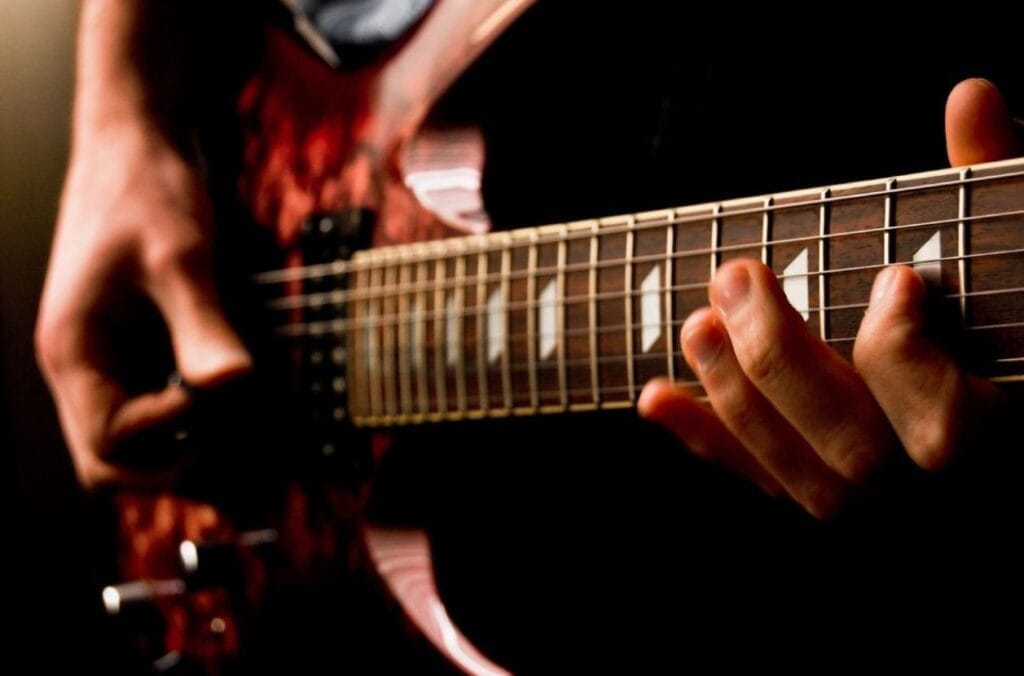
Percussive guitar
Percussion guitarists use the guitar’s body to produce bass and snare beats and incorporate them into their strumming or fingerpicked melodies (often, it’s a combination of all of them). Muted strummings are also utilized quite a bit in this style.
These guitarists often perform alone, some amazing contemporary ones being Marcin and Ernesto Shnack.
Genres you’ll find it in
Flamenco music
Slide Guitar
Slide guitar is a soulful and evocative technique that transforms the guitar into a vessel of raw emotion. A slide, typically a glass or metal tube, is placed over the strings, allowing the guitarist to glide along the fretboard and produce smooth, haunting tones.
The slide guitar offers the smoothest form of legato melodies. It is an art of microtonal subtlety and expressive wails, exemplified by legendary players like Robert Johnson and Duane Allman.
Genres you’ll find it in
Blues, country, psychedelic rock.
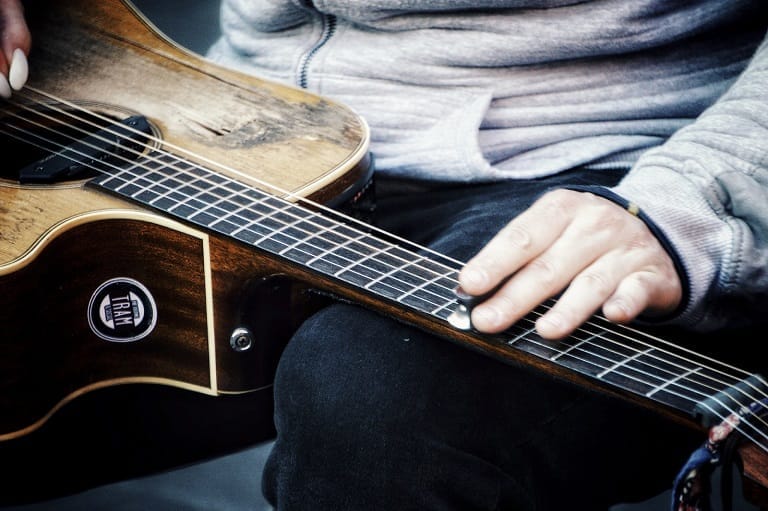
Modern Guitar
This style features unconventional playing styles, such as two-handed tapping, hybrid picking, slapping, and thumping. Many experiments with guitar tones use FX pedals to achieve tones ranging from vintage to futuristic. Angular melodies and odd-time signatures are familiar in this style of guitar playing.
Genres you’ll find it in
Progressive rock and metal, avant-garde music.
Guitar Playing Styles by Genre
Blues Guitar
Blues guitar is the embodiment of raw, soul-stirring musical expression. Rooted in African-American history, this genre channels emotions like no other. It’s characterized by its distinctive 12-bar chord progressions, bent notes, and that unmistakable feeling called “the blues.” Blues guitarists convey heartache, resilience, and jubilation through their strings, often improvising with a deeply personal touch. The genre’s influence reverberates through rock, jazz, and countless musical forms.
Techniques involved
Bending, slides, legato, pentatonic scale runs, etc.

Classical Guitar
Classical guitar is a discipline steeped in tradition and grace. Intricate fingerpicking techniques weave rich tapestries of melody and harmony. This style, rooted in centuries-old compositions, showcases the guitar’s intimate voice. Classical pieces, often written for the piano, are adapted to the guitar using fingerpicking, enabling one to play multiple notes together. Parallel melodies are familiar in this style.
Techniques involved
Fingerpicking, legatos, tremolos, intricate arpeggios, and lyrical phrasing.

Check out classical guitar knee rests.
Jazz Guitar
Jazz guitar is a genre where innovation and tradition converge, resulting in captivating, soul-stirring music that continues to evolve and captivate listeners with its improvisational spirit and timeless allure. Defined by its sultry chords, extended arpeggios, and improvised solos, jazz guitarists paint vivid musical landscapes.
Jazz guitarists take pride in breaking the rules, always creating unconventional harmonies, structures, and melodies that push the boundaries of listeners’ musical knowledge.
Techniques involved
Complex extended chord progressions, modal scales, chromaticism, muting, and legato phrasing.

Rock Guitar
Rock guitar, an electrifying force, is the beating heart of rebellious anthems and timeless classics. Distorted power chords, fiery solos, and pulsating rhythms define its sonic landscape. From the pioneering riffs of Chuck Berry to the virtuosic fretwork of Jimi Hendrix and the arena-filling hooks of Slash, rock guitarists channel raw energy through six strings.
Techniques involved
Power chords, shell chords, palm muting, legatos, bending, pinch harmonics, etc.

Funk and R&B Guitar
Funk and R&B guitar grooves are the backbone of infectious rhythms and soulful melodies. These genres are defined by tight, rhythmic playing characterized by clean, percussive strumming and crisp, well-placed staccato notes. Wah-wah pedals, and fingerstyle plucking adds distinctive textures, elevating the music’s funkiness and emotional depth.
Techniques involved
Muting, slapping, staccatos, syncopation.

Metal Guitar
The metal guitar is a realm of sonic extremity, where aggressive distortion, lightning-fast riffs, and relentless shredding define the genre’s intensity. Drop tunings and menacing guitar tones deliver chugging rhythms, groovy breakdowns, and searing solos.
Metal guitarists are architects of sonic mayhem, forging a genre celebrated for its raw power, virtuosity, and unapologetic sonic assault.
Techniques involved
Palm muting, tremolo picking, sweep picking, pinch harmonics, pick scrapes, and modal runs.

Flamenco Guitar
Flamenco guitar embodies the soul of Spain, a passionate and rhythmic dance of strings and emotion. Rooted in Andalusian culture, it showcases melodic flourishes that evoke the spirit of the Gypsy. The haunting Phrygian scale and hypnotic tremolo create a visceral connection to the music’s deep emotions.
Maestros like Paco de Lucía and Vicente Amigo have elevated this genre, making it an enchanting journey through fiery rhythms, delicate melodies, and the expressive heart of Spanish tradition.
Techniques involved
Rumba, Rasgueado, Piccado, Golpe, Tremolo.
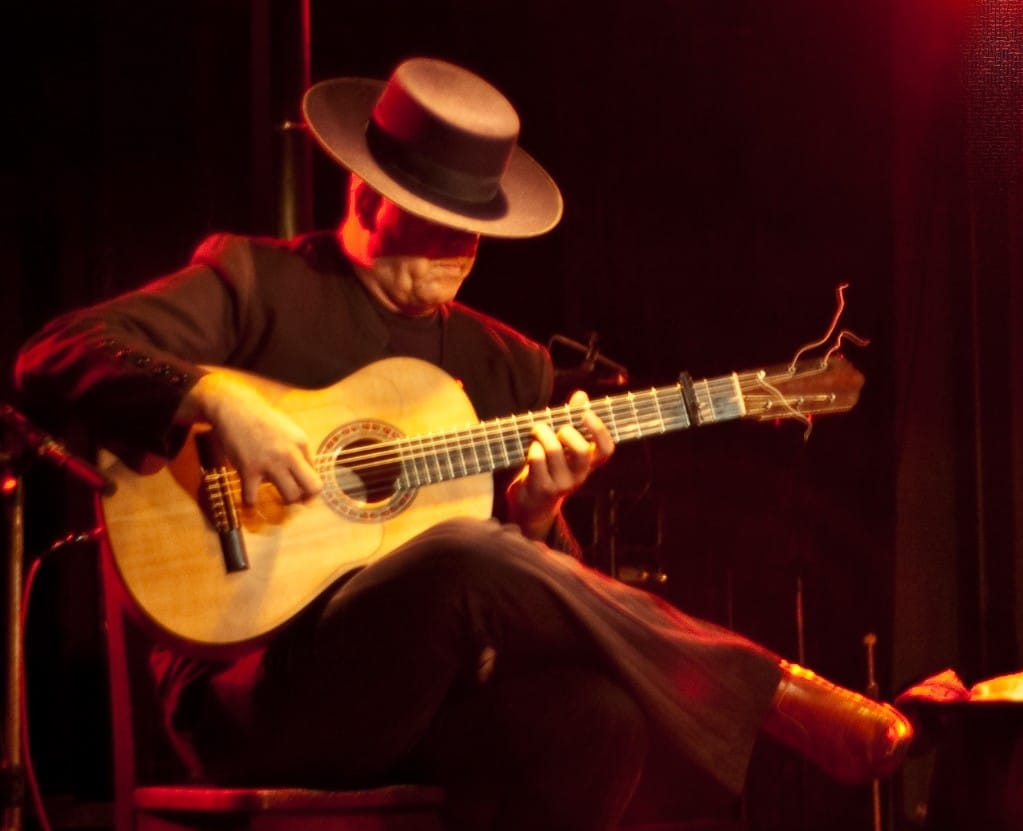
Progressive/Avant-Garde Guitar
Progressive and avant-garde guitars push the boundaries of musical experimentation and complexity. Guitarists in these genres employ unconventional scales, dissonant chords, and intricate time signatures to create mind-bending sonic landscapes.
They explore unconventional techniques, including extended-range guitars and electronic effects, forging aural journeys that challenge conventional notions of melody, rhythm, and structure.
Techniques involved
Modulation, Borrowed chords, Two-handed tapping, Hybrid picking, Slapping and thumping, Natural and Artificial Harmonics, etc.

Which should you learn to play?
Simple. Whichever genre you like. No style is superior to another; whichever you want, you go right into it. And if you aim to become a virtuoso, you can only find out which style suits you by trying the techniques and how they synergize with your traits. Eventually, you’ll get a hang of every style of playing with practice. It will increase your imagination and allow you to try out new things.
Of course, you don’t have to pick a single one from the guitar-playing styles out there either; everything is fair game as long as you have the dedication to learn and practice.
FAQs
Rock, Blues, Jazz, Classical, Country, Flamenco, Folk, Metal, R&B/Soul.
It’s tough to give a definite number as styles keep evolving, but there are at least 9 major ones, each with sub-genres.
Many consider Folk to be the easiest, primarily because it often uses simple chord progressions and is forgiving to beginners.
Listen to a broad range of music and identify what resonates with you. Start by learning the basics of that style, and then experiment! Try blending elements from different genres, and don’t hesitate to take inspiration from your favorite guitarists.
- 6 Unique Guitar Picks That Will Blow Your Mind - February 6, 2025
- Master the Harmonic Major Scale And Intervals - February 6, 2025
- 9 Eye Catchy Unique Guitar Straps for Every Musician - February 6, 2025

